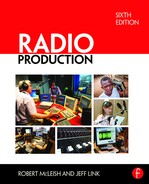1 Characteristics of the medium
Radio speaks to the individual
Radio can suffer from interference
The studio desk, mixer, control panel, console, or board
4 Using the Internet and social media
Making the best use of social media
Objectivity, impartiality, and fairness
Intelligibility in the writing
Civil disturbance and war reporting
The news conference and press release
What the interviewee should know
Preparation before the interview
Interviewing through a translator
Information for the broadcaster
11 Newsreading and presentation
Additional telephone facilities
Letters, phone calls, emails, texts and tweets
The product or service ‘premise’
18 Outside broadcasts (remotes)
Reproduction of internal balance
Creation of a synthetic balance
22 Documentary and feature programmes
Technician, editor, administrator, and manager
Exercises and questions for media students
